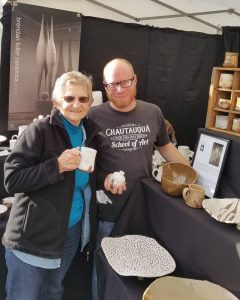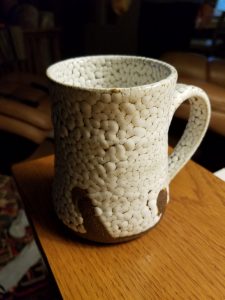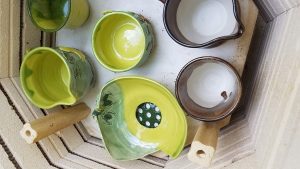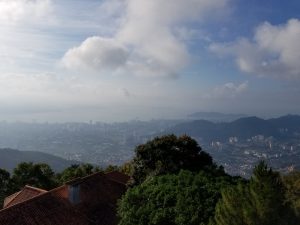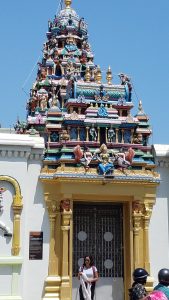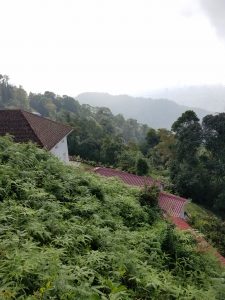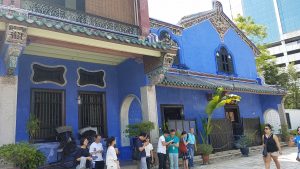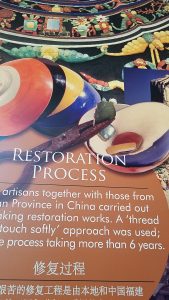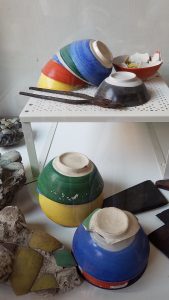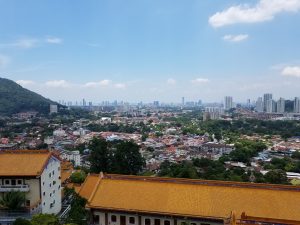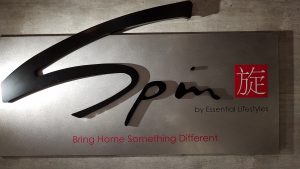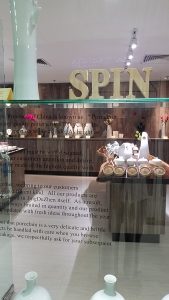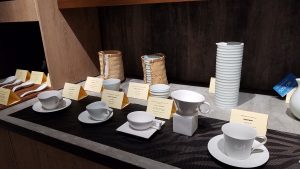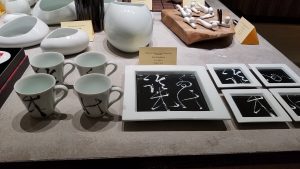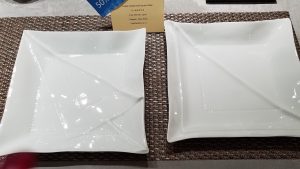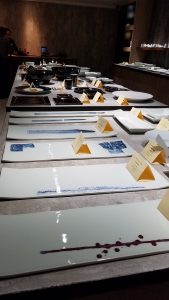We went on an excursion yesterday to find the last surviving Dragon Kiln in Singapore. Came across information about it while researching pottery options in Singapore and certainly caught my interest. The Thow Kwang Dragon Kiln is on the property of an import/export company that deals in ceramic sales from all over Asia. Is quite an interesting place just to see all the ceramics–high end, inexpensive, copies, local made and imported for sale in this big open air warehouse in the middle of an industrial park.
But the Dragon Kiln is the pride and joy of the Tan family who have owned it since the 1940’s and want to promote the legacy and tradition of wood fired pottery so it isn’t lost to history. Once, this was the way commercial pottery was produced going back centuries. These huge kilns (you can see Will standing inside it) snaked up a gentle hillside. Pots were stacked inside, wood fires were lit in one end and gravity would gently bring the heat up and through the belly of the “dragon” to fire the clay. Its interesting to see the wood ash “glaze” on the inside walls from years of firings. I have seen such kilns in China in museums and attractions but this one is actually fired a couple of times a year. They take a tremendous amount of wood, in ancient times whole counties were deforested feeding the kilns. That is a problem now and they are careful to use scrap and recycled wood. Now they invite local potters to contribute items to fire and make a big city wide media event/festival out of it. Next fire is first week in December. She invited me to contribute something but unfortunately I won’t be here long enough to enjoy the experience.
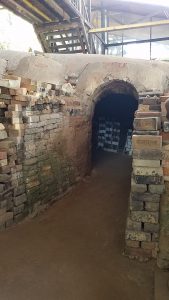
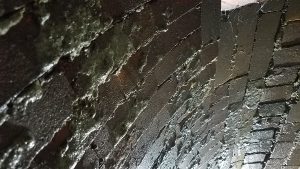
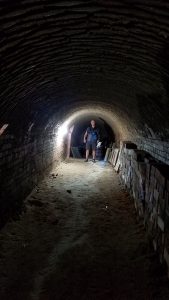
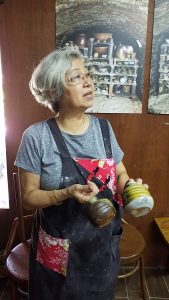
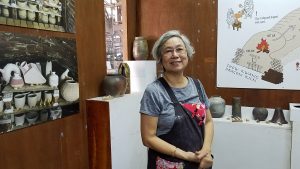
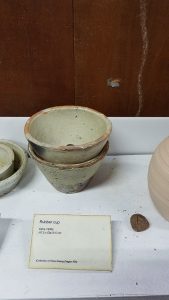
Yulianti Tan was there the day we visited and so gracious to show us around and tell us all about what they are trying to do here. She is a clay artist in her own right and also does Ikibani flower arrangement–using her pots! In the days when this kiln was in full production one of their main products was the bowls for collecting sap from rubber trees. Today they don’t use ceramic containers–plus the amount of rubber plantations is pretty small in comparison. They also have classes here to teach throwing and hand building and a class was going on today.
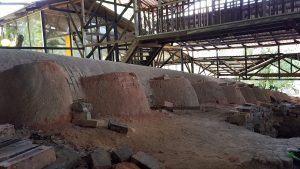
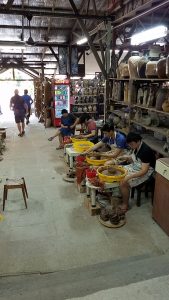
The dragon kiln is pretty much outside except it is covered with a roof to protect it from tropical rains. This gives an idea how large it is. Mrs Tan invited me to make something and get it to her to put in the fire in December–Doug could pick it up for me–Or I could come back and get it. Wouldn’t be the same as participating in the 30 hour fire but would still be kinda fun to have something with my initials on it go through the fire in December.
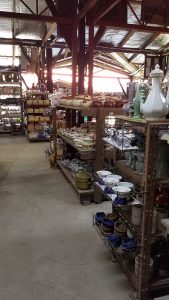
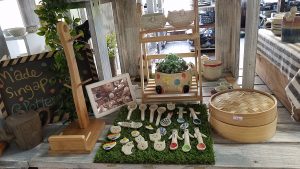
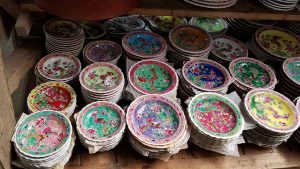
One of the ceramic products they sell in Paranakan ceramics. This has a long regional history in the “Straits” from Malaysia and Singapore. When the area was first a trading center hub, Chinese traders settled here and prospered. Since women were forbidden from leaving China and coming with their husbands, the men took local women as wives and the Peranakan culture was born. This reproduction of Peranakan porcelain decorated in colorful overglazes, with motifs symbolizing marital harmony and longevity was made in China, for wealthy families in the British Straits Settlements in the Malay Peninsula and Singapore. You see it all over and is quite pricy.
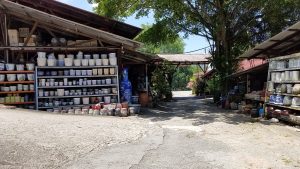
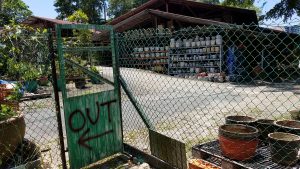
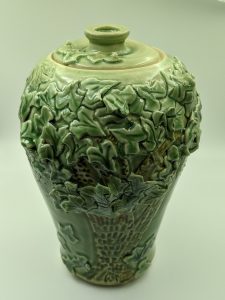
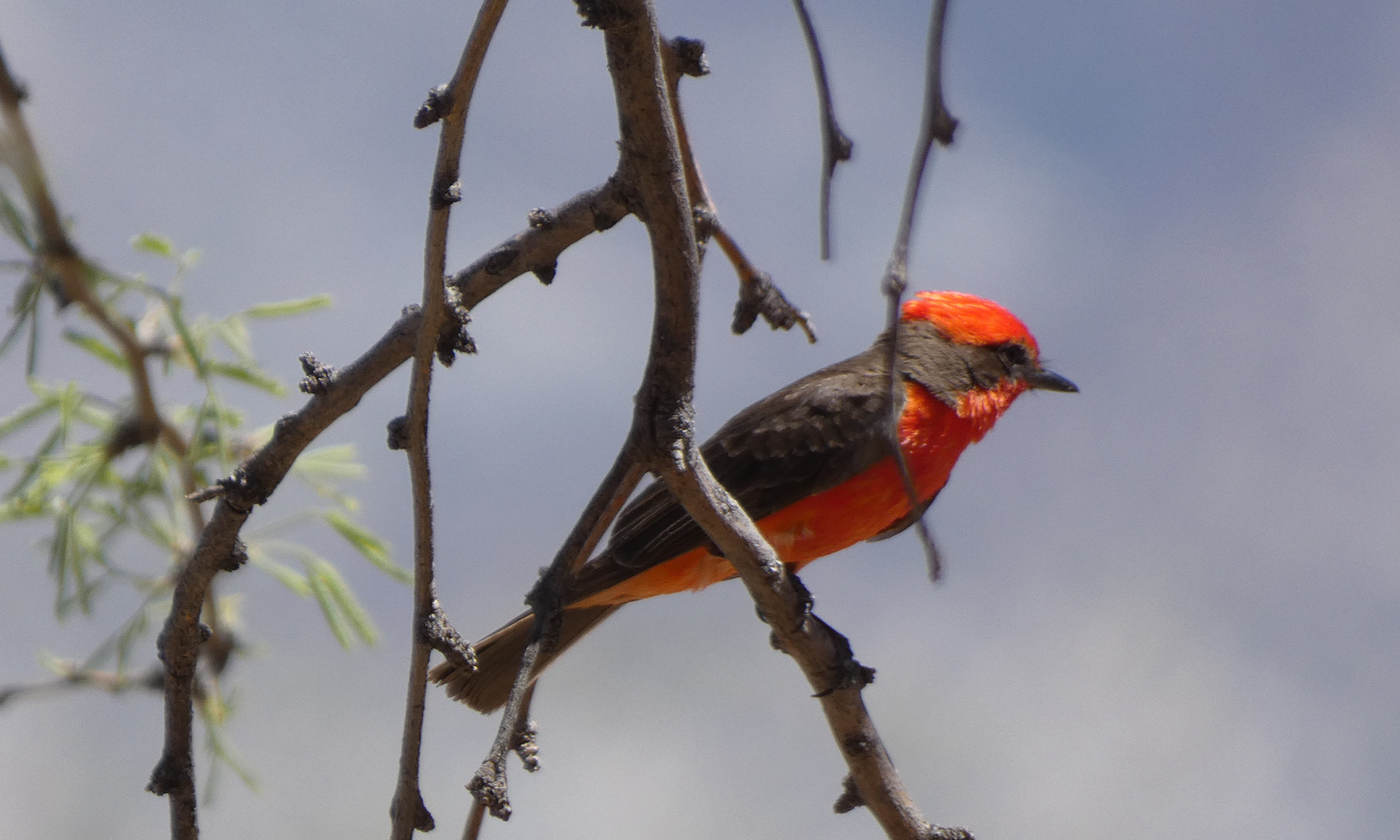
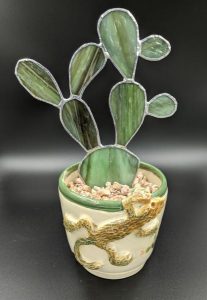 Will and I have been working together! We have, after all, been spending an inordinate amount of time together these days–haven’t we all! So he is doing the stained glass and I am providing the pots and we have come up with a bunch of fun creations. We have ideas for more so lets see how creative we can get!
Will and I have been working together! We have, after all, been spending an inordinate amount of time together these days–haven’t we all! So he is doing the stained glass and I am providing the pots and we have come up with a bunch of fun creations. We have ideas for more so lets see how creative we can get!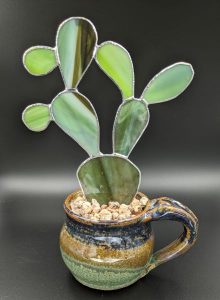
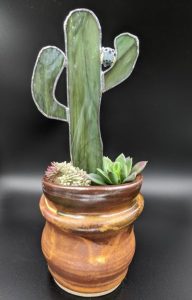
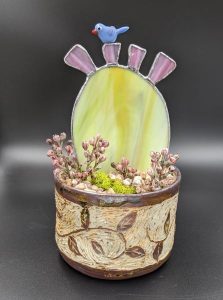
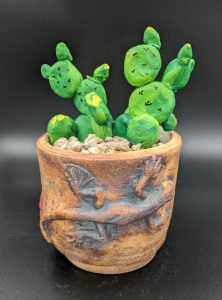 The last three are all clay.
The last three are all clay. 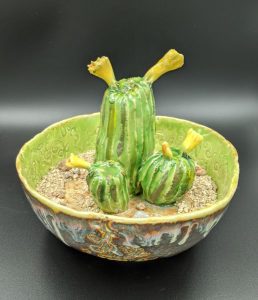
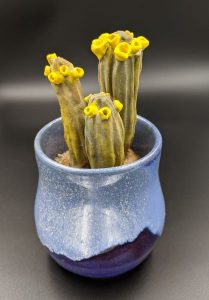
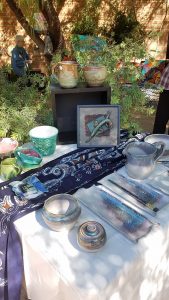
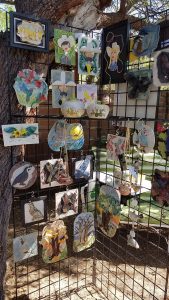
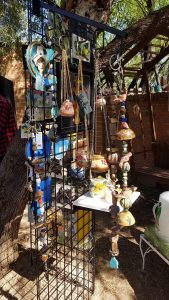
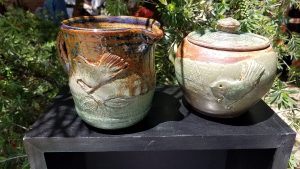

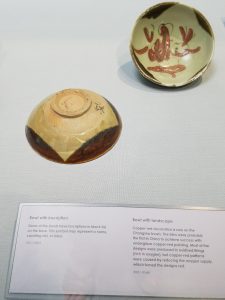
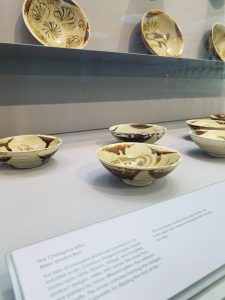
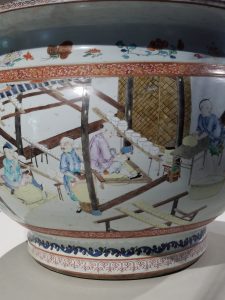
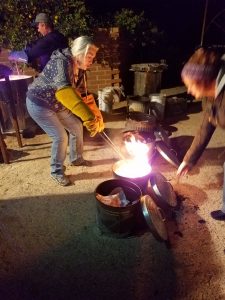 Went to my friend and “pottery bud’s” house on Friday for a Raku party. Glennda does a Raku fire once a month on the second Friday of the month and invites any one who is interested. Its a fun night, but of course, potters are fun people–we all know that. This week about a dozen people showed up, old standby’s and some new people who had not participated in a raku firing before. We bring our bisqued pieces, gather late in the afternoon around her patio
Went to my friend and “pottery bud’s” house on Friday for a Raku party. Glennda does a Raku fire once a month on the second Friday of the month and invites any one who is interested. Its a fun night, but of course, potters are fun people–we all know that. This week about a dozen people showed up, old standby’s and some new people who had not participated in a raku firing before. We bring our bisqued pieces, gather late in the afternoon around her patio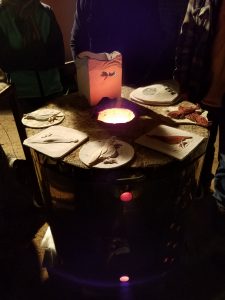 table to paint them with raku glazes that she supplies and enjoy a pot luck supper and get to know everyone. Then we all head to the back yard where Ray has the kiln fired up and ready to load the first batch.
table to paint them with raku glazes that she supplies and enjoy a pot luck supper and get to know everyone. Then we all head to the back yard where Ray has the kiln fired up and ready to load the first batch.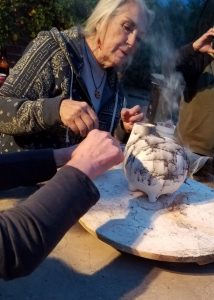 Glennda gives instructions to a couple of new people just how to add horsehair to a piece that is steaming hot, fresh from the kiln for a very cool look.
Glennda gives instructions to a couple of new people just how to add horsehair to a piece that is steaming hot, fresh from the kiln for a very cool look.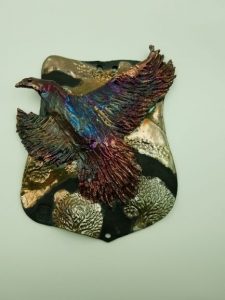
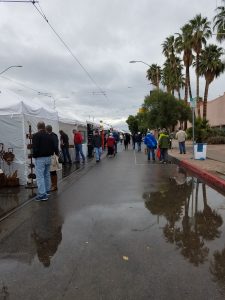 Tucson’s winter 4th Avenue Street Fair started out a little wet this year. Big downpour of rain as it was suppose to open up Friday morning, sending a river of water down the street overwhelming the storm drains. But didn’t last long. Left a few puddles but soon the sun came out and vendors were back in business.
Tucson’s winter 4th Avenue Street Fair started out a little wet this year. Big downpour of rain as it was suppose to open up Friday morning, sending a river of water down the street overwhelming the storm drains. But didn’t last long. Left a few puddles but soon the sun came out and vendors were back in business.